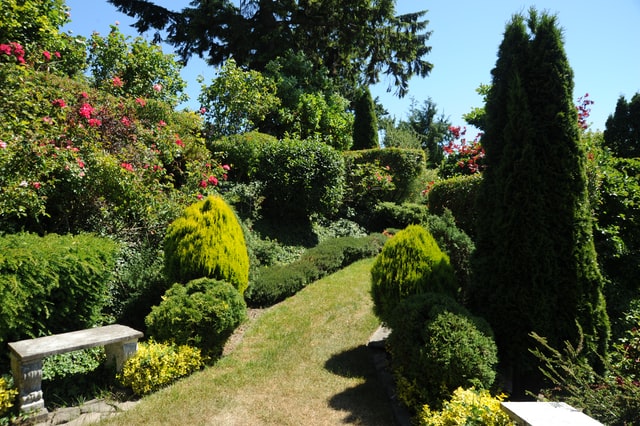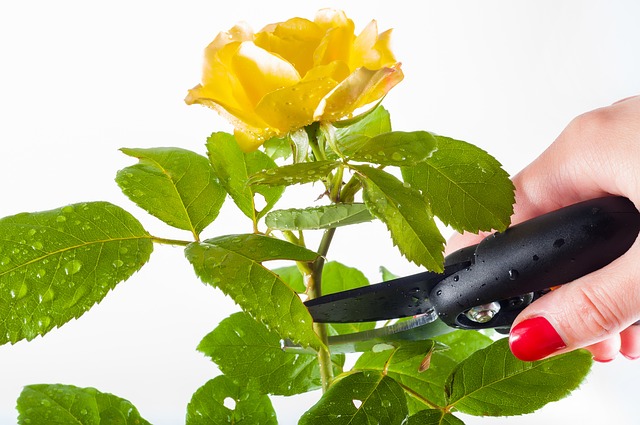This extract has been taken from “Firescaping Creating Fire- Resistant Landscapes, Gardens, And Properties in California’s Diverse Environments Wilderness Press Berkeley, CA”. General guidelines for removal and reclamation is well described & served by “Emergency Tree Removal Service” at Pleasanton, CA.
Removing large areas of vegetation may not be a one-time event. The initial clearing may be a temporary solution to a recurring problem. In these difficult to-control situations, a maintenance program will be needed to reclaim the landscape. A landscape cleared but not reclaimed can quickly reestablish itself in two to five years.

Reclaiming a landscape from unwanted plants is a lengthy process. Reclamation may involve many months of diligent weeding, patiently exhausting the soil of its stored seeds. It might require putting up barriers or weeding a neighbor’s yard, slowing the migration of seeds. In most situations, reclamation will require planting and\or seeding, helping to establish a plant that can aggressively take an area from an undesired species.
One of the most important aspects of clearing or reclamation is the follow-through. Clearing an area for the first time is a stimulant to many plants and seeds. Seeds are distributed when hauling the vegetation, and the recently disturbed soil is an ideal incubator when warmed by the sun. If new sprouts from the remaining trunks and seeds are not removed before they set seed, the problem will be back next season. Plan to return to the area within two months and pull the remaining unwanted plants.
Before renting a tiller or buying herbicides, consider some general guidelines about the processes of removal and reclamation.
Personal safety
Clearing land is not only hard physical labor, it involves the use of dangerous equipment. Always wear eye and ear protection when using weed0-whackers, chainsaws, and chippers. Ankle-high boots, thick pants, long-sleeved shirts, and gloves should be worn like a uniform.
Moderation
Trying to tackle too much at one time can lead to a variety of problems. Erosion, an invasion of weeds, storm damage, and even personal injury are common when quality is sacrificed for quantity. Never clear more than can be replanted in one season, especially on slopes. Also, stagger the removal of shrubs and trees in dense groves. If too much of the grove is taken out at one time, wind, freeze, and sun damage is likely. Selectively remove no more than 30 percent of a plant or grove at a time, planning to come back in two years to remove another 30 percent.

Equipment
According to the California department of forestry, the leading cause of wildfires is equipment use. The mowers, weed-whackers, and chainsaws used to clear land are constant sources of friction, heat and sparks. To avoid starting a fire while working with machinery, be sure to take the following precautions:
- Put spark arresters on all exhaust ports, and repair holes in existing systems and arresters.
- Check for a buildup of carbon in exhaust systems and on spark plugs.
- Refuel only when the engine has cooled down.
- Never lay a running or hot engine in grass or other ignitable vegetation.
- Bring a fire extinguisher to the work site.
- Avoid all work that involves machinery during extreme fire-weather conditions—hot, dry, windy days.
Timing
Some people wait to clear land until a point of crisis, typically at the height of every fire season. But this can do more harm than good- it can even start a fire, as mentioned above. Late winter and early spring are the best times to clear landscapes: most plants have only begun growing, and only a few have set seed. The soil is also easy to work. A landscape will recover more quickly when nourished by the lengthening days and gentle rains expected in mid to late spring.
Ecology
Bacteria, bugs, and plants coexist in a garden: hurt one and others suffer as well. When clearing, take great care to minimize damage to these important residents of your micro-ecosystem. Protect plants from falling and dragged debris. Lay boards and plywood over beds and grasses to help distribute the weight of repeated footsteps. If working in dry conditions, a light watering will help bind the soil, dampening the dust. Never work in soil that is soggy: it can cause compaction and degrade the health of the soil.
Herbicides
All herbicides should be well understood and used with care. More often than not, unwanted vegetation will have to be removed by hand. And killing plants prior to be removed by hand and killing plants prior to pulling makes the task harder.
Herbicides are available in three varieties. The first, called a non selective herbicide, is indiscriminate and kills all plants. The most effective non selective is a translocative or systemic herbicide. The systemic herbicide is drawn in by the plant and flows through its system, killing cells at it travels. The second class of herbicides is selective and kills only monocot (grasses) or dicots (broad leaf plants). The third class is a chemical pre-emergent and inhibits seeds from germinating.
Barriers
The seeds of unwanted plants can be persistent and will find a variety of ways into a garden: on wind, off cars, from birds and pets, and from tools and shoes wind-blown seeds are possibly the most common. To reduce the constant migration of seeds, a gardener must install barriers. There are a variety of barriers that protect a garden from wind-borne seeds. For instance sprawling shrubs and hedges along the street trap seeds and raised beds and planters deter them. Simply identify the landscape from where the seeds are coming from and create a barrier.
Continue reading on Fall Planting